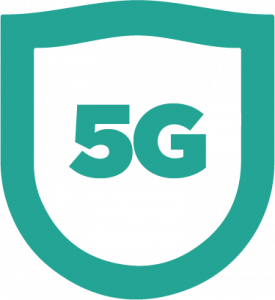
Thur., Apr 15, 2021 11 AM – 12 PM PDT

Learn what’s needed to deliver on a robust security strategy that incorporates continuous testing to pre-emptively identify vulnerabilities and prioritize risk mitigation. Both operators and equipment manufacturers need comprehensive security plans.
As 5G implementations evolve and mature, security will become even stronger. We will see added encryption, additional defense at the edge of the network, and technologies such as network function virtualization, mobile edge computer, and network slicing that can make networks more secure.
The impact of 5G technology continues to expand as networks are introduced in cities around the U.S.
The speed and low latency of 5G should help transform virtually all industries, ranging from manufacturing to healthcare. 5G could benefit factory floors with things like wirelessly connected robotics and automated assembly lines, potentially allowing monitoring of these processes to be more precise and insightful than ever before. Healthcare should benefit from a low-latency, high-speed 5G network by delivering things like 3D imaging, advanced diagnostics, and wireless connections to robotic surgical tools in near-real time.
The speed and low latency of 5G should help transform virtually all industries, ranging from manufacturing to healthcare. For instance, 5G could benefit factory floors with things like wirelessly connected robotics and automated assembly lines, potentially allowing monitoring of these processes to be more precise and insightful than ever before. Healthcare should benefit from a low-latency, high-speed 5G network by delivering things like 3D imaging, advanced diagnostics, and wireless connections to robotic surgical tools in near-real time.
5G cellular technology should also benefit edge computing, bringing critical resources and processing tasks closer to the source of data and to the user. Speeding data transfer by shortening the distance that it has to travel will not only improve latency but will also allow permit complex functions to occur within the network, near the end user—meaning that the end user’s device would require less processing capability and consume less energy.
5G cellular technology should also benefit edge computing, bringing critical resources and processing tasks closer to the source of data and to the user. Speeding data transfer by shortening the distance that it has to travel will not only improve latency but will also allow permit complex functions to occur within the network, near the end user—meaning that the end user’s device would require less processing capability and consume less energy.